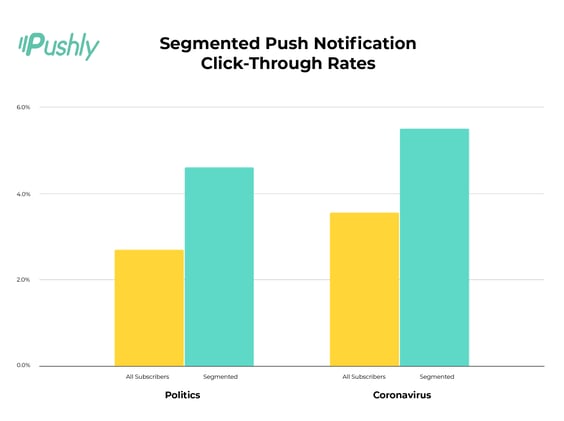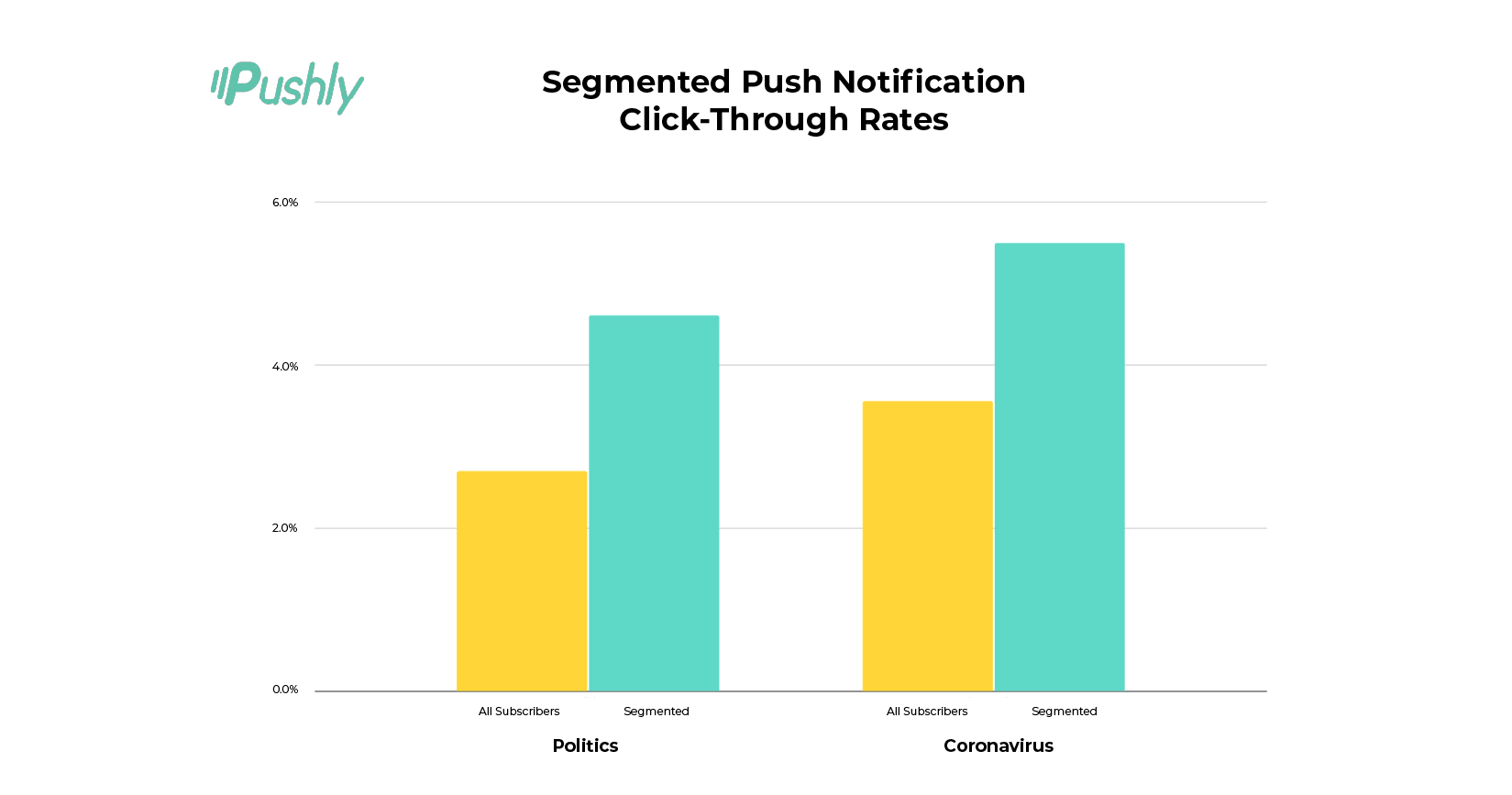A lot happened in 2020. From Coronavirus updates to election news (and murder hornets, remember those?) readers were inundated with information. Publishers want to engage their audiences with unique articles, but too much content can be overwhelming.
Pushly’s best-in-class segmentation tools ensure your subscribers will receive personalized content they want to click. 2020 data supports subscriber segmentation: quarter over quarter, from COVID news to football scores, readers were more likely to engage with personalized notifications.
Why segment subscribers?
Readers who opt in to push notifications want quick access to interesting content. But many publishers cater to a variety of demographics and needs. An “open faucet” approach to push, where subscribers receive every alert, overwhelms readers with less relevant notifications, leading to attrition and decreased engagement.
Segmenting readers ensures they’ll see personalized content — not a flood of notifications. Pushly’s Smart Segmentation leads to higher click through rates (CTRs) and more loyal readership by appealing to subscriber preferences.
How does smart segmentation work?
Pushly’s Segment filters separate readers into groups based on their inferred and explicit interests. The Pushly platform internalizes subscriber behaviors, like which topics they read on a publisher’s site, the notifications they click, and even factors gleaned from the publisher’s first-party data, to curate personalized content.
Targeting users based on their chosen content and visit frequency allows Pushly to deliver notifications focused on topics related to each user’s current interests. This allows publishers to bring readers back to relevant content, expand user interest, and increase visit frequency. Depending on a site’s key performance indicators (KPIs), this can lead to more entries into digital subscription funnels and/or more advertising revenue from highly engaged users. Pushly can also share these user-level insights with the publisher to help complete their first-party data picture.
Geo-segmenting targets readers by location, region, and timezone. A subscriber in Omaha is more likely to click articles about Nebraska than New York. This allows partners to drive event attendance (when there’s not a pandemic), amplify their buy online, pick up in-store initiatives, and even deliver hyper-targeted weather updates!
Smart segmentation gives readers what they want
Coronavirus content dominated the publishing field in 2020. Evolving rules, regulations, and statistics generated thousands of push notifications and staggering CTRs.
COVID-related pushes to general audiences tapered April through December, reflecting the public’s waning interest in pandemic news. However, the number of pushes sent to targeted audiences (using Pushly’s Segmentation tool) remained steady — and so did their engagement rate.
- COVID notifications had a total CTR of nearly 5% when sent to all subscribers in 2020
- Q3 to Q4 2020 showed the clearest signs of Coronavirus news fatigue as CTRs on all subscriber sends dropped by 50% for COVID-related news
- Despite the fatigue exhibited by wider audiences, publishers continued to see superior CTRs on sends targeted to audience groups which continued to show interest in COVID news. These Segmented sends often reached CTRs as high as 9% throughout the year
- As a whole, segmented subscribers had a 2% higher CTR in 2020 compared to all subscriber sends. That number may seem small — but since segmented subscribers allow for higher volume of deployments, they contributed nearly 75% of Coronavirus-related sessions in 2020

Bottom line: Pushly’s Segmentation allows you to send more Notifications and generate more traffic from users who are interested in a specific topic, while sparing the fatigued users more Notifications.
Interested in boosting CTRs with Smart Segmentation? Connect with us to increase page views in 2021.

